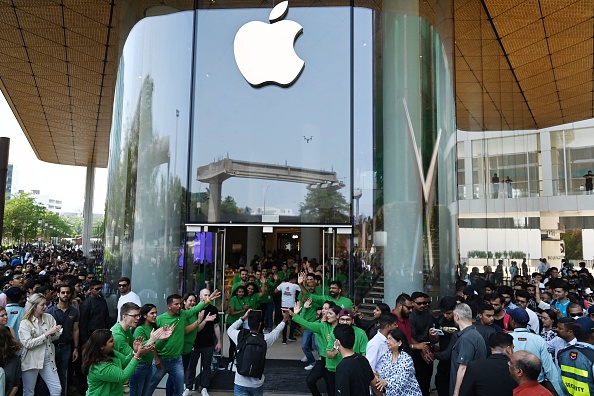The 7 lasting impacts of COVID for Australian investors
A leading Australian economist says two years on, the long term implications of COVID for the economy have emerged
AMP chief economist Dr Shane Oliver says the effects of the pandemic continue to reverberate across the world, with seven key lasting impacts leading to “a more fragmented and volatile world for investment returns”.
“Perhaps the biggest impact is that the pandemic related stimulus broke the back of the ultra-low inflation seen pre-pandemic,” said Dr Oliver. “Together with bigger government and reduced globalisation, this means a more inflation-prone world. So, a return to pre-pandemic ultra-low inflation and interest rates looks unlikely.”
Here is a summary of Dr Oliver’s explanation of the seven key lasting impacts of COVID for investors.
1. Bigger government
The pandemic added to support for bigger government by showcasing the power of government to protect households and businesses from shocks, enhancing perceptions of inequality, and adding support to the view that governments should ensure supply chains by bringing production back home. IMF projections for government spending in advanced countries show it settling nearly 2 percent of GDP higher than pre-COVID levels.
Implications for investors: … likely to be less productive economies, lower than otherwise living standards and less personal freedom.
2. Tighter labour markets and faster wages growth
After the pandemic, labour markets have tightened reflecting the rebound in demand post-pandemic, lower participation rates in some countries and a degree of labour hoarding as labour shortages made companies reluctant to let workers go. As a result, wages growth increased, possibly breaking the pre-pandemic malaise of weak wages growth.
Implications for investors: Tighter labour markets run the risk that wages growth exceeds levels consistent with two to three percent inflation.
3. Reduced globalisation
A backlash against globalisation became evident last decade in the rise of Trump, Brexit and populist leaders …. Also, geopolitical tensions were on the rise with the relative decline of the US and faith in liberal democracies waning ... The pandemic inflamed both with supply side disruptions adding to pressure for the onshoring of production [and] heightened tensions between the west and China … we are seeing more protectionism (e.g.,with subsidies and regulation favouring local production) and increased defence spending.
Implications for investors: Reduced globalisation risks leading to reduced potential economic growth for the emerging world and reduced productivity if supply chains are managed on other than economic grounds.
4. Higher prices, inflation and interest rates
Inflation [due to stimulus payments to households and supply chain disruptions] is now starting to come under control … but the pandemic has likely ushered in a more inflation-prone world by boosting bigger government, adding to a reversal in globalisation and adding to geopolitical tensions. All of which combine with ageing populations to potentially result in higher rates of inflation.
Implications for investors: Higher inflation than seen pre-pandemic means higher than otherwise interest rates over the medium term, which reduces the upside potential for growth assets like shares and property.
5. Worsening housing affordability
… the lockdowns and working from home drove increased demand for houses over units and interest in smaller cities and regional locations. As a result, Australian home prices surged to record levels. Meanwhile, the impact of higher interest rates in the last two years on home prices was swamped by housing shortages as immigration surged in a catch-up. The end result is now record low levels of housing affordability for buyers …
Implications for investors: Ever worse housing affordability means ongoing intergenerational inequality and even higher household debt.
6. Working from home
There are huge benefits to physically working together around culture, collaboration, idea generation and learning but there are also benefits to working from home with no commute time, greater focus, less damage to the environment, better life balance and for companies – lower costs, more diverse workforces and happier staff. So the ideal is probably a hybrid model.
Implications for investors: Less office space demand as leases expire resulting in higher vacancy rates/lower rents, more people living in cities as vacated office space is converted, and reinvigorated life in suburbs and regions.
7. Faster embrace of technology
Lockdowns dramatically accelerated the move to a digital world. Many have now embraced online retail, working from home and virtual meetings. It may be argued that this fuller embrace of technology will enable the full productivity-enhancing potential of technology to be unleashed. The rapid adoption of AI will likely help.
Implications for investors: … a faster embrace of online retailing … at the expense of traditional retailing, virtual meeting attendance becoming the norm for many … and business travel settling at a lower level.
This stylish family home combines a classic palette and finishes with a flexible floorplan
Just 55 minutes from Sydney, make this your creative getaway located in the majestic Hawkesbury region.
Money worries are having a cascading effect on stress levels, conflict and even the rate of ageing
Worrying about the cost of living is causing accelerated ageing, household arguments and creating significant stress, according to new research. More than half of Australians say they have experienced personal setbacks due to financial strain over the past year. Almost 20 percent say that have suffered a stress-related illness, 33 percent have lost sleep and almost one in five are seeing signs of early ageing.
Household hostility is also rising, with 19 percent of Australians admitting they have argued with their partners about money, and a further one in 10 have argued with family and friends.
The Finder survey of 1,070 Australians reveals women are bearing the brunt of financial stress, with 62 percent reporting they have worried about money compared to 42 percent of men.
Younger Australians are struggling the most, with almost 7 in 10 Gen Z respondents reporting financial strain compared to 58 percent of Gen Xers and 24 percent of baby boomers.
The impact of cost-of-living pressures among different age groups and income levels is reflected in new data from the Australian Bureau of Statistics (ABS). The selected living cost indexes show employee households are under more strain from inflation, with the CPI measure for this population group at 6.5 percent today compared to the official overall CPI figure of just 3.6 percent.
The discrepancy is due to higher mortgage interest payments – which make up a higher proportion of expenditure for employee households — as well as an increase in primary and secondary school fees, and the indexation of tertiary education fees at the start of the year. The official CPI does not include mortgage payments, so the living cost indexes provide a more accurate picture of how rising interest rates are impacting households with mortgages today.
The inflation rate is much lower for older Australians, who have often paid off their mortgages. The inflation rate on living expenses for age pensioner households is below the official CPI level at 3.3 percent, and it’s only slightly higher at 3.4 percent for self-funded retirees.
Graham Cooke, head of consumer research at Finder, said that despite cooling inflation, Australians were still under significant financial pressure.
“This can be seen in Finder’s Cost of Living Pressure Gauge, which has been hovering in the extreme range for the past year and a half,” Mr Cooke said. The gauge returned a reading of 78 percent in March this year compared to 47 percent in March 2021, when inflation was 1.1 percent and the Reserve Bank’s official cash rate was 0.1 percent.
Interestingly, Australians’ cash savings are higher today than they were in 2021, likely reflecting stimulus payments received and saved during the pandemic. The Reserve Bank has cited pandemic savings as a factor in keeping mortgage arrears low despite much higher interest rates. The Finder research shows Australians have an average of $37,206 in cash savings today, up from $24,928 two years ago.
“Money concerns can cause problems in your everyday life and snowball quickly if you don’t get them under control,” Mr Cooke said. “Building financial resilience is as vital as ever as costs continue to rise. Pay close attention to where your money is going so you keep impulse spending to a minimum, and don’t overspend.”
Australians appear to be heeding this advice, with the latest ABS retail figures showing seven straight quarters of declining per capita spending. “Per capita volumes show retail turnover after the effects of inflation and population growth have been accounted for,” explained Ben Dorber, ABS head of retail statistics. “Following an unprecedented seven straight falls, it is very clear how much consumers have pulled back on spending in response to cost of living pressures over the past two years.”
This stylish family home combines a classic palette and finishes with a flexible floorplan
Just 55 minutes from Sydney, make this your creative getaway located in the majestic Hawkesbury region.


















